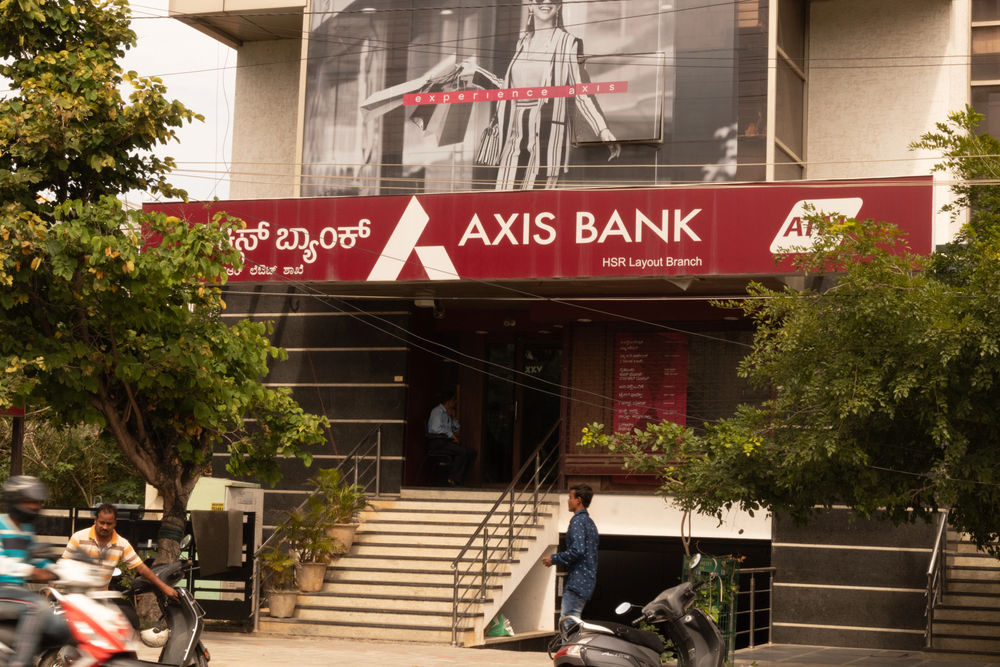Red alert as Axis Bank share price forms two rare risky patterns

Axis Bank’s shares have retreated sharply in the past few weeks as concerns about its growth rate continues. It has dropped by over 10% from its highest point this year, meaning that it is in a correction.
Year-to-date, the stock has risen by 6%, underperforming the Nifty 50 and BSE Sensex, which have risen by double digits. It has also lagged behind the Nifty Bank Index, which tracks the biggest Indian banks.
Axis Bank’s capital raise
The Axis Bank share price will be in the spotlight after the company raised a new fund worth over ₹39.25 billion or $472 million from investors. It did that by issuing 10-year infrastructure bonds with a coupon rate of 7.45%. The fund had substantial demand from local and international investors.
The new capital raise is important because it comes at a time when Indian banks are struggling with slow deposit growth. A recent report by the Reserve Bank of India (RBI) showed that deposit growth of banks rose ro ₹213.28 lakh in while non-food bank credit growth rose to ₹162.92 lakh in July.
Credit growth has been in a strong uptrend in the past few months, pushing banks to embrace other strategies to raise capital. At the same time, Indian banks are bracing for next year’s revision of the Liquidity Coverage Ratio (LCR) rules on Aptil 1 next year.
Axis Bank’s financial results
The most recent results showed that Axis Bank, the third-biggest private sector bank in India, was not doing well. Its net interest income (NII) rose by just 3% in q1’ FY25 ro over ₹13.448 crore while its fee income dropped by 8% to ₹5,204 crore.
Most global banks have seen a strong growth in the net income margin in the past few years as central banks have hiked interest rates. In India, the central bank has maintained rates steady at 6.50% in the last ten consecutive meetings.
The rate pause happened after the bank hiked them from 4% in 2021 to deal with the soaring inflation.
Banks benefit when interest rates rise because they get a chance to increase the spread between what they pay depositors and what they charge borrowers. In Axis Bank’s case, rate hikes have helped to push its NII from over ₹7,760 crore in the first quarter of 2022 to ₹13,448 crore.
However, there is usually a limit to how high these margins and profits rise. In most cases, as we are seeing in India, has meant that substantial sums of money have flowed out of banks to money market funds, which are paying higher rewards.
The other implication is that India’s inflation has remained at an elevated level in the past few years. As a result, many depositors have withdrawn their funds to cater for their living expenses.
The recent results showed that Axis Bank’s profit after tax dropped by 15% to ₹6.035, which is still higher than the ₹2,160 it made in Q1’22.
Axis Bank’s deposit growth rose by 13% to ₹10,62,484 crore while net advances to customers jumped by 14% to ₹9,80,092. These numbers mean that advances are growing at a faster rate than deposits.
The bank’s expenses have also risen because of its branch network growth. It ended the last quarter with 5,427 branches, higher than the 5,377 it had in the previous quarter.
Is Axis Bank a good investment?
Fundamentally, Axis Bank is one of the best Indian bank stocks to invest in. The company has a long track record of revenue, profitability, and customer growth. It has also grown its market share, especially in the merchant acquiring industries, where it has a 21% market share.
Most notably, it has adequate capital buffers, with a CET 1 ratio of 14%, higher than those in most western countries. For example, most British and American banks have a ratio of less than 14%.
The company will likely benefit as the Indian economy continues growing. The expectation is that the economy will grow by over 7% this year as China struggles to hit 5%.
However, a key risk for the company is that the Indian rupee has continued falling and now sits near a record low.
Axis Bank share price analysis
The daily chart shows that the Axis Bank stock price peaked at ₹1,340 in August. It then suffered a harsh reversal after publishing its financial results. The stock has dropped below the 50-day moving average.
Most notably, the stock has formed a bearish flag and a rising wedge chart pattern shown in red. Therefore, there is a risk that it will soon have a bearish breakout as the wedge nears the confluence level.
If this happens, the next point to watch will be at ₹1,220, its lowest point in August and 4.56% below the current level.
The post Red alert as Axis Bank share price forms two rare risky patterns appeared first on Invezz



